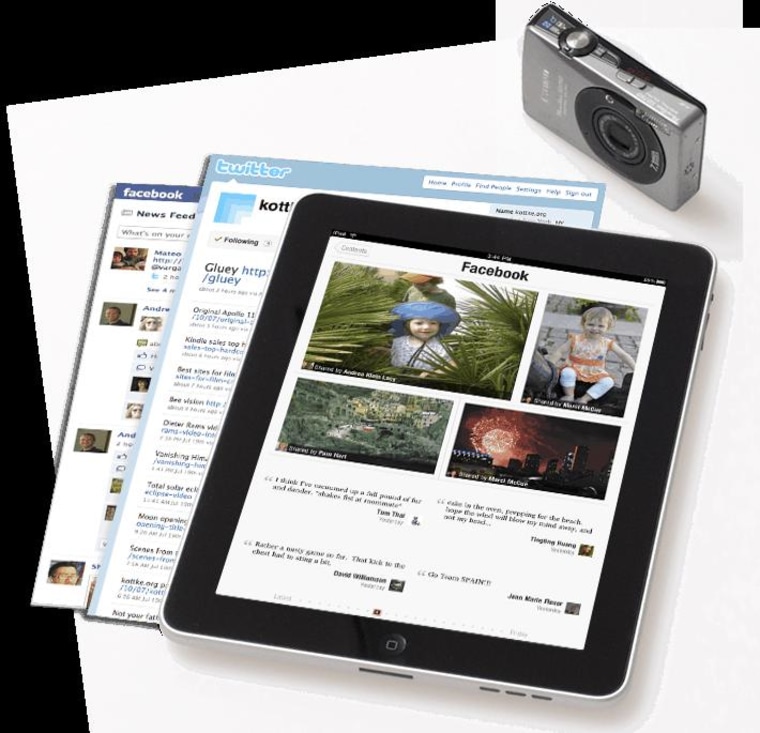On a platform filled with ways to consume media, Flipboard's iPad app fills the niche of making Twitter and Facebook status updates seem more important than they are.
Suddenly, the grainy Facebook picture of my friend's new high heels looks like the cover shot of a magazine article. One random Twitter post that makes sense to a fraction of the people who read it is displayed so starkly in Times New Roman that it looks like divine poetry.
Flipboard is billed as "your social magazine," a stylized digital content reader curated by the people. But the free iPad app, available now, works best when those people are actually showing you interesting things, and not just boring you with the minutia of their daily lives.
I was actually having a pretty good time with Flipboard before it stopped giving me "over capacity" error messages when I tried to sync my Facebook and Twitter profiles. There's lots to do in this app that have no relation to your Facebook Friends and Twitter followers, to the point that it could become my main way to consume news on the iPad.
Flipboard's main menu is a three-by-three grid of content hubs. The app has its own set of curated hubs, such as World News, FlipFilm and FlipPhotos, but you can also create hubs that are based entirely on Twitter lists or users. So if you wanted a neat way to read lots of PCWorld content, you could create a hub solely for PCWorld's Twitter feed. Or you could build your own Twitter list of your favorite websites, and then create a hub based on that. If you useInstapaper, an app that lets you save articles for later reading on the iPhone or iPad, you can pull those stories into Flipboard as well.
The interface of each hub looks a lot like the New York Times' website, with one or two large images and headlines flanked by a grid of smaller stories. If the hub is based on Twitter or Facebook feeds, the articles automatically pull in photos, text and even video from the web. Clicking on any article takes you to an enlarged version, and from there you can visit the actual website for the full article through an embedded browser. Flicking a finger across the screen takes you to the next batch of articles.
I wouldn't say the interface is vastly different than that of, say, the NPR or BBC iPad apps. Flipboard is all about the aggregation, driven by social media and people rather than one newspaper editor or a cold RSS feed.
The seams only come apart when the social feeds are vapid. Flipboard may be the iPad's most powerful content aggregator, but it'll take a skilled user to filter what's really important.
